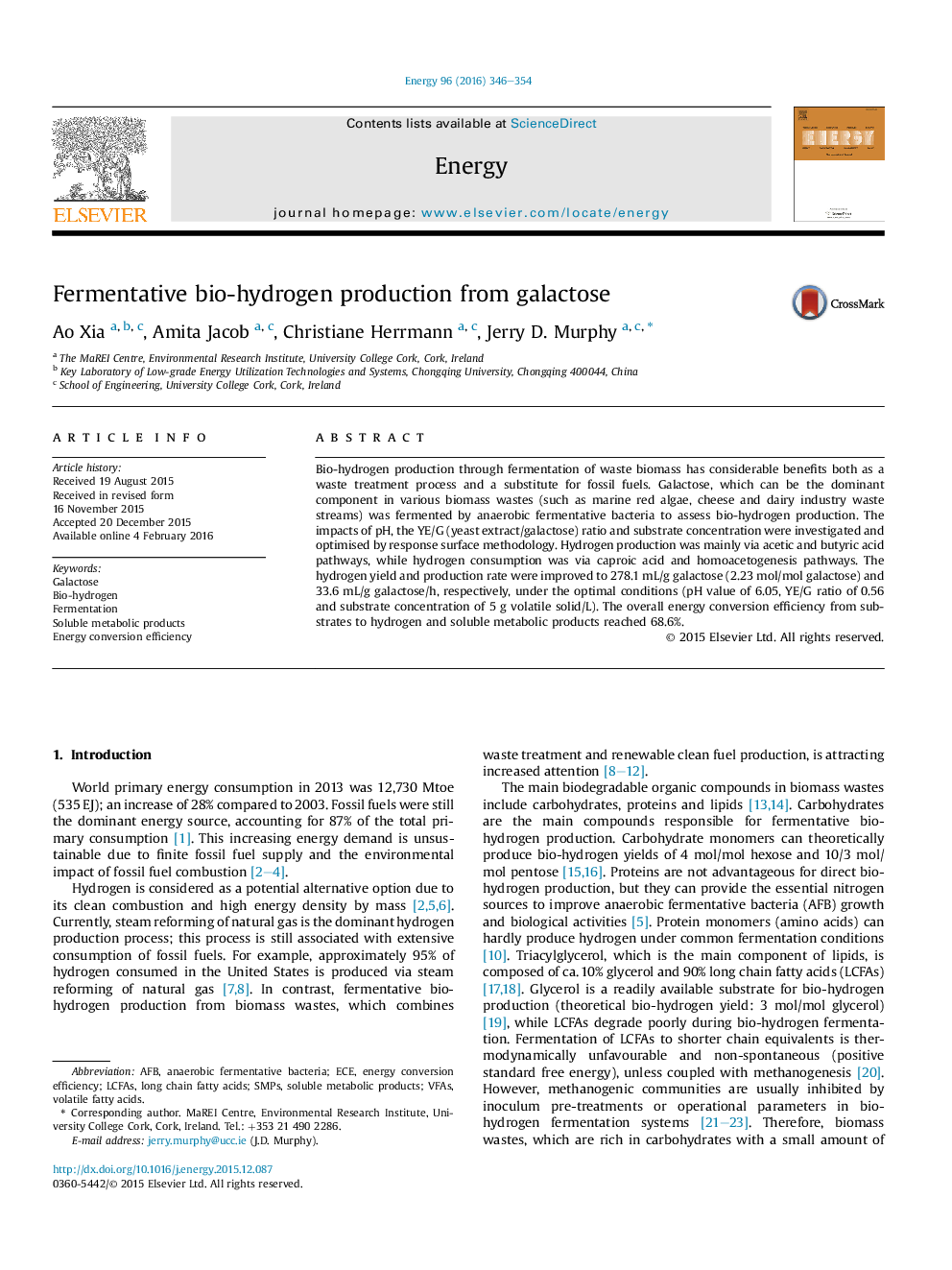| Article ID | Journal | Published Year | Pages | File Type |
|---|---|---|---|---|
| 1731274 | Energy | 2016 | 9 Pages |
•Galactose was fermented by anaerobic fermentative bacteria for H2 production.•H2 yield of galactose was improved by response surface methodology.•The maximal H2 yield achieved 278.1 mL/g galactose (2.23 mol/mol galactose).•The maximal H2 production rate achieved 33.6 mL/g galactose/h.•Overall energy production efficiency reached 68.6% via fermentation.
Bio-hydrogen production through fermentation of waste biomass has considerable benefits both as a waste treatment process and a substitute for fossil fuels. Galactose, which can be the dominant component in various biomass wastes (such as marine red algae, cheese and dairy industry waste streams) was fermented by anaerobic fermentative bacteria to assess bio-hydrogen production. The impacts of pH, the YE/G (yeast extract/galactose) ratio and substrate concentration were investigated and optimised by response surface methodology. Hydrogen production was mainly via acetic and butyric acid pathways, while hydrogen consumption was via caproic acid and homoacetogenesis pathways. The hydrogen yield and production rate were improved to 278.1 mL/g galactose (2.23 mol/mol galactose) and 33.6 mL/g galactose/h, respectively, under the optimal conditions (pH value of 6.05, YE/G ratio of 0.56 and substrate concentration of 5 g volatile solid/L). The overall energy conversion efficiency from substrates to hydrogen and soluble metabolic products reached 68.6%.
